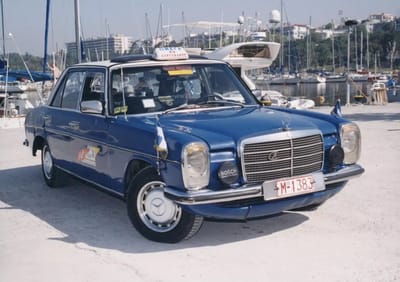How Chicago O’Hare runway design keeps one of the world’s busiest airports moving
Published on Jul 19, 2025 at 6:17 AM (UTC+4)
by Molly Davidson
Last updated on Jul 15, 2025 at 4:28 PM (UTC+4)
Edited by
Emma Matthews
It’s one of the world’s busiest airports – and somehow, the Chicago O’Hare runway design keeps it all running like clockwork.
We’re talking 80 million passengers a year, hundreds of planes a day, snowstorms, red-eyes, and rush-hour madness.
And yet, somehow, it all works.
That’s not luck – it’s smart runway design. O’Hare’s layout isn’t just big, it’s brilliant.
VISIT SBX CARS – View live supercar auctions powered by Supercar Blondie
How Chicago O’Hare pulls off four takeoffs at once
Chicago O’Hare doesn’t just have a lot of runways – it has a system.
The airport has eight runways in total, laid out mostly in parallel. The Chicago O’Hare runway design isn’t just for show – it’s what lets the airport handle massive traffic without slowing down.
Here’s how it works: landing planes usually head to runways 27C and 28C, while departures take off from 27R and 28R.
By splitting arrivals and departures across different runways, Chicago O’Hare avoids one of the biggest causes of delays – planes having to cross paths.

The unique Chicago O’Hare runway design is basically like giving landing and takeoff traffic their own dedicated highways. No bottlenecks, no traffic jams, just smooth movement in both directions.
Even better? The runways are spaced far enough apart – around 3,000ft – to allow multiple planes to land or take off at the same time, even in poor weather.
On a busy day, the airport can land three planes at once and launch four in quick succession.
And if the wind shifts direction, the whole operation flips, too.
O’Hare switches to ‘east-flow’ mode, where everything runs in reverse – same efficiency, just facing the other way.

Chicago O’Hare’s runway design, introduced gradually starting in 2008, replaced the airport’s old X-shaped grid – a system that caused frequent delays and traffic conflicts.
Back in the ’60s through the late ’90s, O’Hare was the busiest airport in the world, but it lost that crown as traffic outgrew its outdated design.
The new runway layout changed everything.
Since the redesign, delays have dropped by over 40 percent, and O’Hare is back near the top – even briefly reclaiming the world’s busiest airport title for flight movements in 2023.
What’s next for one of the world’s busiest airports?
Even though the runway redesign wrapped in 2021, O’Hare is still upgrading.
New exit taxiways are coming to help clear planes faster. Bypass lanes are being added so Airbus A380s don’t hog the road. Even the FAA is stepping in with smarter scheduling software.
During winter, when snow hits hard, crews plow the center runways while planes keep using the outer ones. Meaning the airport still runs at 70–80 percent capacity even during a blizzard.

And at night, cargo flights get moved to shorter runways to keep the suburbs quiet – how considerate is that?
There are no plans for a ninth runway, but officials have discussed extending runway 4L/22R to improve its performance in strong crosswinds.
It’s not just the number of options that makes the Chicago O’Hare runway design a beast. It’s how every single one plays a role.
And that’s why one of the world’s busiest airports almost never skips a beat.
Click the star icon next to supercarblondie.com in Google Search to stay ahead of the curve on the latest and greatest supercars, hypercars, and ground-breaking technology.
DISCOVER SBX CARS: The global premium car auction platform powered by Supercar Blondie
Molly Davidson is a Junior Content Writer at Supercar Blondie. Based in Melbourne, she holds a double Bachelor’s degree in Arts/Law from Swinburne University and a Master’s of Writing and Publishing from RMIT. Molly has contributed to a range of magazines and journals, developing a strong interest in lifestyle and car news content. When she’s not writing, she’s spending quality time with her rescue English staffy, Boof.




